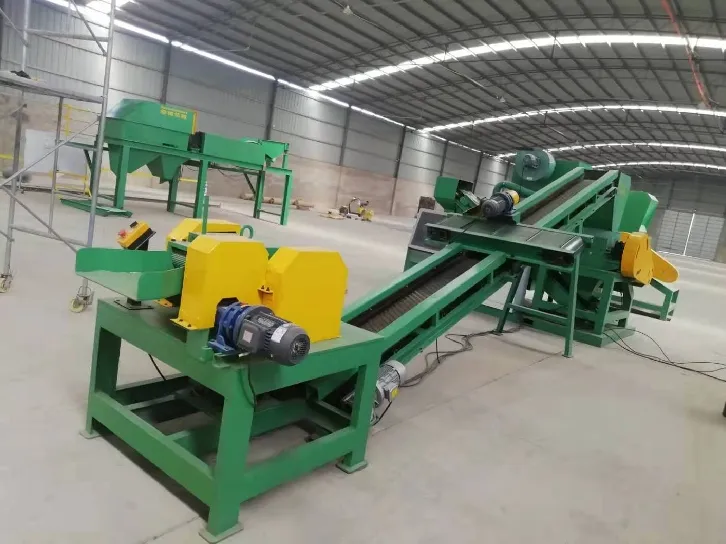In the vast realm of industrial tools,
the small metal shredder machine holds a pivotal role. It's a solution that businesses in recycling, waste management, and manufacturing eagerly turn to for processing metal scrap efficiently. As you delve into pricing this machine, understanding the true value, components, and how they align with your specific needs becomes imperative.

One critical factor influencing the pricing of small metal shredder machines is the build quality. Machines constructed using high-grade, durable materials often come with a higher price tag, but they ensure longevity and reduced downtime. An investment in robust build quality means fewer repairs and replacements, allowing for consistent operation, which is crucial for high-demand environments.
Examining the machine's capacity is another essential consideration. Different models are designed to handle varying quantities and types of metal. Machines that can process a ton of material per hour naturally cost more than those limited to less. However, opting for a high-capacity shredder can prove cost-effective for businesses dealing with large volumes of scrap, thereby justifying the initial investment with long-term efficiency gains.

The technology incorporated into these shredders can significantly affect their cost. Advanced features like automated feeding systems, energy-efficient motors, and precision cutting blades can enhance performance and operational ease. Such enhancements, while potentially increasing the upfront cost, can result in substantial savings in labor and energy over time. The initial higher expenditure is offset by the machine's operational efficiencies and the reduction in manual intervention.
Additionally, the manufacturer or brand's reputation plays a role in pricing. Well-established brands often command higher prices due to their proven reliability, customer service, and after-sales support. Investing in a branded shredder can offer peace of mind, knowing there’s a reliable support system should technical issues arise.
small metal shredder machine price
Customization options also contribute to pricing variability. Businesses might require specific configurations or additional features tailored to their unique needs. Although customization can increase costs, it ensures that the machine perfectly aligns with operational demands, enhancing productivity and reducing potential operational bottlenecks.
For those assessing the pricing landscape, it's equally important to factor in secondary costs. Maintenance, for instance, is a recurring expense that can impact the overall cost of ownership. Machines with lower maintenance demands can potentially lower long-term costs. Additionally, warranty offerings can affect overall expenses; comprehensive warranties, while potentially increasing initial investment, can decrease repair costs down the line.
Finally, understanding market trends can provide a clearer picture of pricing dynamics. As industries continue to prioritize sustainability, demand for efficient metal shredders rises, which can influence pricing. Staying informed about market movements, new technological integrations, and competitor pricing can arm buyers with the knowledge to negotiate effectively.
Purchasing a small metal shredder involves a strategic assessment beyond just the price tag. It requires balancing upfront costs with long-term benefits, assessing both tangible and intangible advantages. For businesses prioritizing sustainability and operational efficiency, investing in a well-designed, feature-rich shredder can lead to significant returns in both process optimization and environmental impact reduction.
In conclusion, evaluating small metal shredder machine pricing involves more than just comparing figures. It is about understanding the quality, capabilities, technological features, reputation, and ongoing costs associated with the machine. An informed purchasing decision not only ensures efficient scrap processing but also provides peace of mind with a reliable and long-lasting investment.


